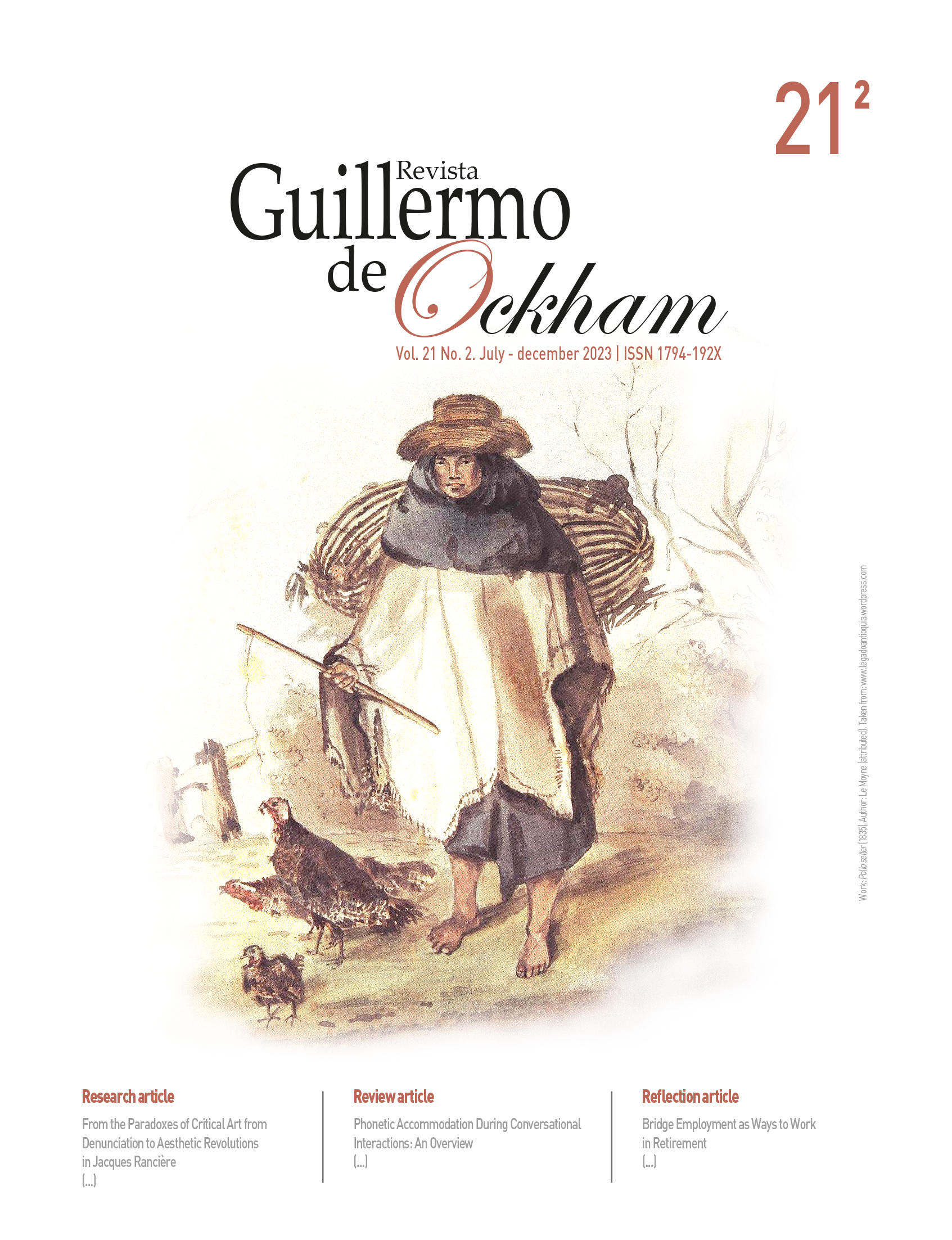The Revista Guillermo de Ockham provides an immediate and open access to its content, based on the principle of offering the public a free access to investigations to provide a global interchange of knowledge.
Unless otherwise established, the contents of this journal has a license with Creative Commons Attribution-NonCommercial-NoDerivatives 4.0 International (CC BY-NC-ND 4.0) http://creativecommons.org/licenses/by-nc-nd/4.0/
- Attribution: You must give appropriate credit, provide a link to the license, and indicate if changes were made. You may do so in any reasonable manner, but not in any way that suggests the licensor endorses you or your use.
- NonCommercial: You may not use the material for commercial purposes.
- NoDerivatives: If you remix, transform, or build upon the material, you may not distribute the modified material.
- No additional restrictions: You may not apply legal terms or technological measures that legally restrict others from doing anything the license permits.
Abstract
This article offers an analysis of some of the concepts related to aesthetics from the perspective of Jacques Rancière. The hypothesis that we are trying to address assumes that the critical art of denunciation and unmasking reproduces the explanatory order, which at the same time shows the ineffectiveness of aesthetic education This is due to at least three reasons: it ignores the inversion of criticism, it separates intelligence in two, and it reproduces the model of the distribution of the sensible. Finally, we address the practice of aesthetic emancipation through the equality of intelligences.
Keywords:
References
Bassas, J. (2023). Una duda sobre el tiempo de la igualdad. [Correo electrónico].
Bassas, J. (2011). El tiempo de la igualdad. En J. Rancière, El tiempo de la igualdad: diálogos sobre política y estética (pp.9-22). Herder.
Corcoran, S. (2019). Introducción. En J. Rancière, Disenso: ensayos sobre estética y política (pp. 15-46). FCE.
Fujita Hirose, J. (2022, 19 de octubre). The critique of the school in post-’68 French thought: Interview with Jacques Rancière. Verso Books. https://www.versobooks.com/en-gb/blogs/news/5465-the-critique-of-the-school-in-post-68-french-thought-interview-with-jacques-ranciere
Jaudon, R. (2020). Esthétique de la politique ou politique de l’esthétique? Jouer Rancière contre lui-même. Essais: Revue Interdisciplinaire d´Humanités, 16, 15-25. https://doi.org/10.4000/essais.812
Rancière, J. (2003). El maestro ignorante. Laertes.
Rancière, J. (2005). The politics of aesthetics: The distribution of the sensible. Continuum.
Rancière, J. (2009). Sobre la importancia de la teoría crítica para los movimientos sociales actuales. Estudios Visuales: Ensayo, Teoría y Crítica de la Cultura Visual y el Arte Contemporáneo, (7), 81-90. https://dialnet.unirioja.es/servlet/articulo?codigo=6824455
Rancière, J. (2011). Momentos políticos. Capital Intelectual.
Rancière, J. (2010). El espectador emancipado. Manantial.
Rancière, J. (2019). Disenso: ensayos sobre estética y política. FCE.
Rancière, J. (2023). El tiempo de la igualdad: diálogos sobre política y estética. Herder.

































